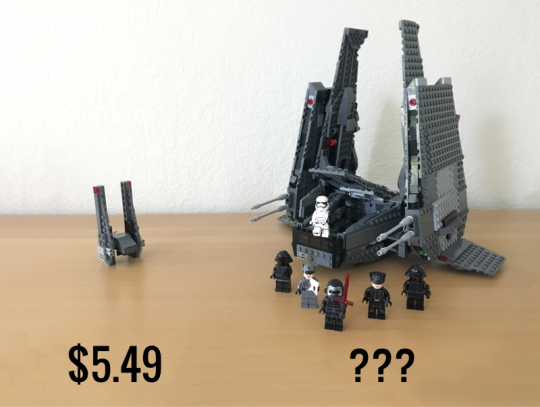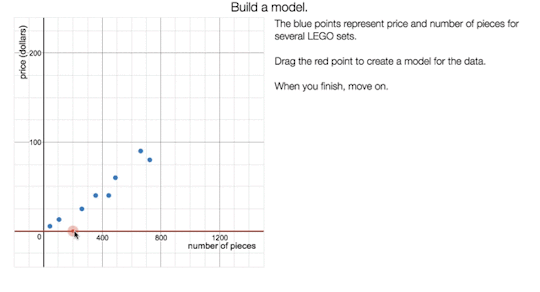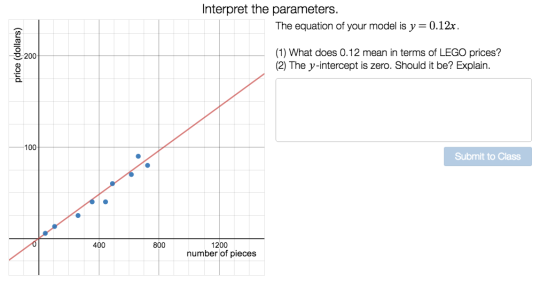The Desmos Teaching Faculty has been thinking hard about modeling.
For too long, many students’ experience with mathematical modeling has been limited to problems that begin “The relationship between this and that can be modeled by the equation….”
Our goals are more ambitious. We want our tools to help students model even when they’re not using our tools.
Our work is partially informed by these excerpts from the Standards for Mathematical Practice:
Mathematically proficient students are comfortable making assumptions and approximations to simplify a complicated situation, realizing that these may need revision later.
They routinely interpret their mathematical results in the context of the situation and reflect on whether the results make sense, possibly improving the model if it has not served its purpose.
A new version of LEGO Prices represents our current best efforts here.
Students make a prediction about the price of a large LEGO set.

They sketch a relationship between price and number of pieces. The teacher can lead a discussion about those sketches—selecting and displaying ones that represent differing assumptions.
Then we impose a proportional relationship.

Students are free to argue back, and we hope that they will! In other modeling
activities, we’ll ask them to select a model type or to build one from
scratch. But at this early stage of modeling, we’re content to impose a
structure in order to let students explore within these constraints.
We ask students to interpret the models they build, and to critique the constraints.

Finally, we build a little suspense by revealing the answer via video.

We’ll have a bunch of new and madeover modeling tasks in the near future. In
the meantime, let us know how modeling is going in your classroom, and how we
can strengthen our approach.
